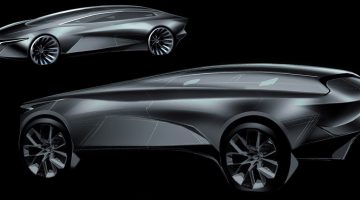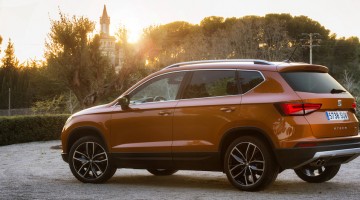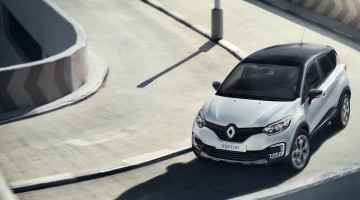The first ever Aston Martin SUV is finally upon us, boasting a 542bhp AMG-derived V8
You knew Aston Martin was building an SUV, didn’t you? You’ve seen the spy shots, the footage of it sliding through a Welsh forest covered in a mix of prototype disguise wrap and mud. If you’re keen you may have read up on the accessories Aston Martin will also offer those in the market for an SUV that claims to be as much sports GT car as it does an off-roader. So here’s the DBX, Aston Martin’s first SUV.
There’s quite a few firsts associated with the DBX. It’s not the first four-door Aston Martin, but it is the first four-wheel-drive car from the firm. It will also be the first to be built in the company’s new, vast St Athan production facility in Wales, too. If all goes to plan it will also be the first model to take Aston Martin’s annual production well into five figures.
To say there is a great deal riding on the DBX ranks alongside claiming Lewis Hamilton is an OK Sunday driver in terms of understatements. For while the Vantage, DB11 and DBS provide the traditional Aston ownership experience and the mid-engined hypercars from Valkyrie through ‘002’ and the forthcoming Vanquish tomorrow’s dreams, the DBX is the reality of sustainability – the volume seller, the share price hero and the model investors want to see lining every street from Tierra del Fuego to the Bering Strait.
Just like the DB7 and 2004 Vantage before it, DBX carries the weight of Aston Martin’s financial footing on its broad shoulders.
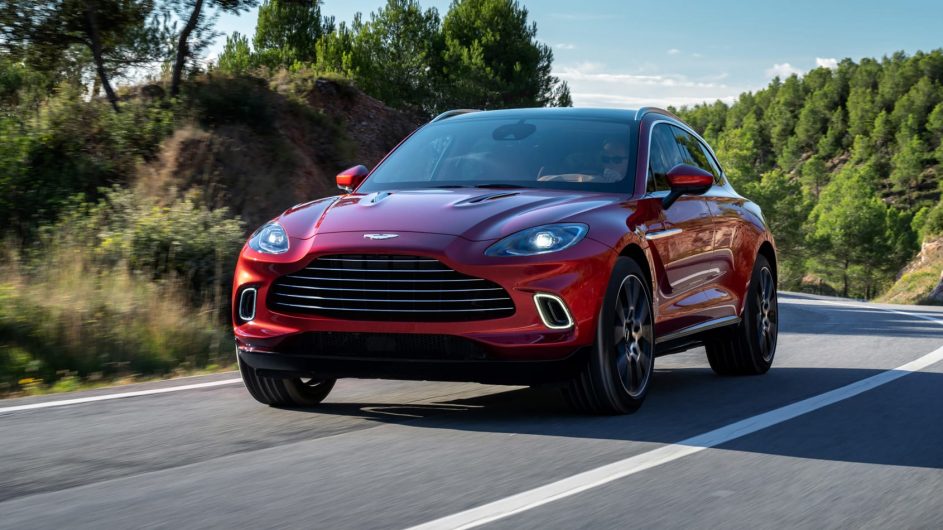
Technical Highlights
There was no starting point for the DBX, so between them Marek Reichman and Matt Becker shared a clean sheet of paper to come up with the blueprint for Aston’s first SUV. ‘We had no need to share a platform or adapt an existing architecture,’ explains Reichman, Aston Martin’s chief creative officer. ‘Which gave us great freedom to determine footprint, wheelbase lengths and overhangs. How high we wanted the roofline to be, how big or small a glass area we wanted. We made every decision to suit us and the customers who we have spoken to along the way.’
By not coming from within a larger group of brands that strive to build individual and distinct vehicles from a shared pool of common components, Aston Martin has been able to produce the car it wanted rather than a close approximation to suit the sum of parts available to it.
That starting point was a platform designed specifically for the DBX of today with an eye to the future. It’s incredibly stiff, which helped chief vehicle engineer Becker spend more time fine-tuning and honing the car’s dynamics rather than trying to mask the problems associated with a platform designed for multiple disciplines operated across a much wider bandwidth.
As well as the stiffness, the DBX’s core also had to be strong, which has resulted in a portly 2245kg kerb weight, but the technology installed is, claims Aston Martin, designed specifically to mask that heft and deliver a driving experience you’d immediately recognise as one honed in Gaydon.
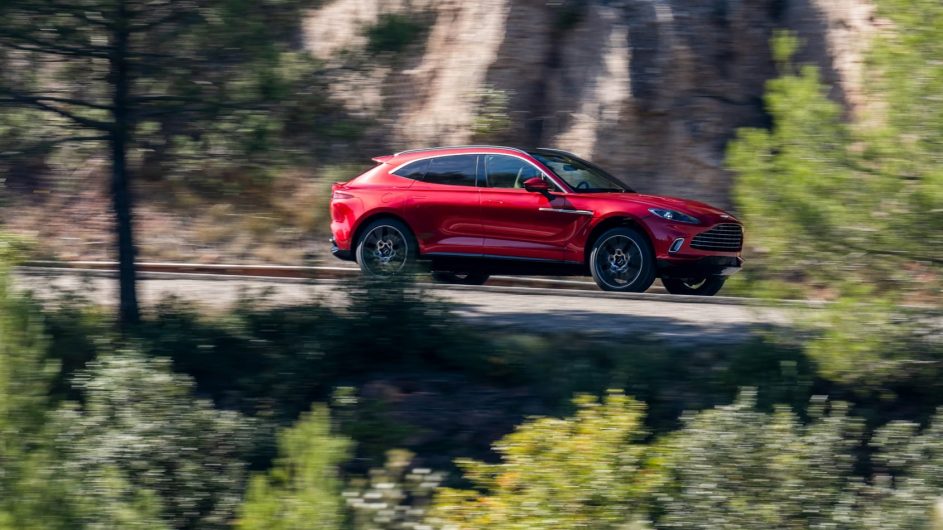
There’s double-wishbone front suspension and a multi-link rear set-up, and included within the former is hydro-bush technology to reduce noise and improve refinement. There is also a three-chamber air-suspension system to Aston’s own design and specification, whilst Bilstein has developed a unique set of adjustable dampers for the car, too. A 48V electrical system has allowed the use of active anti-roll bars capable of putting 1032lb ft of torque through the system, resulting in the DBX generating less roll than a Vantage.
Within the four-wheel-drive system, which can send 100 per cent of the drive to the rear wheels and up to 47 per cent to the front, there’s a central-mounted active e-differential with an e-diff in the rear axle. The front drive relies on torque vectoring to manage the loads.
Five driving modes will be provided: GT, Sport, Sport+, Terrain and Terrain+. The two Sport modes lower the ride height by 15mm respectively (in Sport+ mode the DBX sits 30mm lower than in GT mode), and in Terrain modes the car raises its ride hight by 25 and 45mm respectively over GT mode.
Two 22-inch wheel designs will be offered at launch, with bespoke Pirelli P Zero tyres including an All Season and a winter tyre option also offered. Tyre sizes are split front to rear (285/40 and 325/35) to prevent turn-in oversteer and improve the handling balance. Steel brakes measuring 410mm at the front and 390mm at the rear are clamped by six-piston calipers.
Becker says the target was to produce an SUV that sat between a Porsche Cayenne and Lamborghini Urus in terms of performance. ‘Our steering isn’t as quick as that of a Cayenne [14.4:1 compared to 12.5:1] because we wanted to maintain a linear steering input, as you would expect from a sports car.
‘We couldn’t just make it behave like an Aston Martin sports car, though. We also had to make sure it could do everything that is expected of these vehicles. Regardless of what you think of SUVs, what you can make these machines do is hugely impressive. I’ve been shocked at some of the things it’s capable of.’
Engine, Gearbox and 0-60mph
Mercedes-AMG’s 4-litre hot-V twin-turbo V8 will be the first engine offered with the DBX, although it’s been future-proofed for a variety of motors, including electric ones. The bare numbers are 542bhp and 516lb ft of torque, and while AMG hasn’t developed a bespoke engine for Aston, nor the British outfit set about the Affalterbach engine itself, the Gaydon engineers have developed a new exhaust system to provide the DBX with its own distinctive tone and sound.
At the heart of the four-wheel-drive system is a nine-speed torque converter automatic gearbox, the first time Aston Martin has used Mercedes’ nine-speed unit. Mounted to the back of the engine, drive is sent to the rear wheels via a carbonfibre propshaft.
Performance is brisk despite the DBX’s bulk. Zero to 60mph arrives in 4.3sec, with the top speed pinned to 181mph, which is plenty for something weighing as much as it does. If you’re lucky you might see 8.5 L/100km, but closer to 6,4 L/100km is most likely.
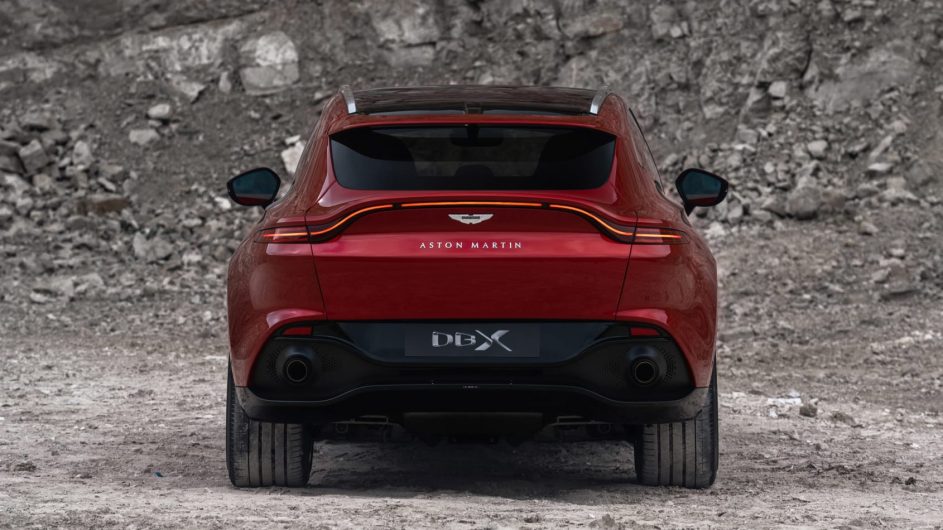
Design
There are some obvious Aston Martin design cues in the DBX. Its familiar family face, the frameless doors, upswept tail and the clamshell bonnet have been elegantly integrated by Reichman and his team. But it’s how they have disguised the car’s bulk that impresses the most. While its wheelbase is longer than the Bentley Bentayga’s, the Aston is shorter overall. For an idea of its on-road footprint think Range Rover Velar.
It’s a striking design and has little of the offensive overtones that afflict so many of its rivals. Yes, it’s tall, wide and its aluminium body looks fit to bursting, but there’s an elegance to the DBX’s presence. It makes its rivals look either over-styled or over-bloated. Sometimes both.
It’s when you’re inside the DBX that it does what few other SUVs manage: it provides interior space to match its external footprint. Ingress is helped by not having to step up or over a high sill, and when you sit in the latest evolution of the DB11’s seat you feel low and snug but with a glasshouse that enables you to see across all four corners. It’s an SUV you sit in and not on.
Class-leading interior space both front and rear aren’t natural Aston Martin USPs, but they are crucial here. So, too, the ergonomics, often compromised in a sports car, but in this segment no such approach will do. The TFT screens are integrated, the switches for core functions have a single action for clarity of operation and there’s storage where you need it, not where there’s room for it. The attention to detail is to be commended, the benefits of not having to work within the constraints of a third-party platform taken fully advantage of.
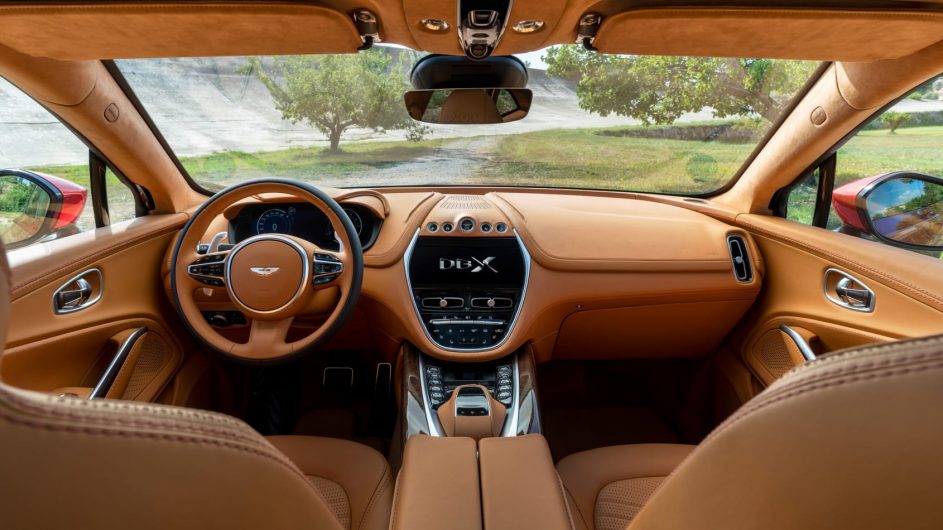
Price and rivals
Some $203,777 opens the bidding for an Aston Martin DBX, which is strong money against the $176,564 Bentley Bentayga V8, but on a par with Lamborghini’s Urus at $206,260. Porsche’s Cayenne Coupe Turborocks up at $135,072. BMW’s X6M, the Range Rover Velar SVA and Mercedes GLE 63 Coupe are similar money to the Porsche.
First deliveries are scheduled for early summer 2020.
This article originally appeared at evo.co.uk
Copyright © evo UK, Dennis Publishing


